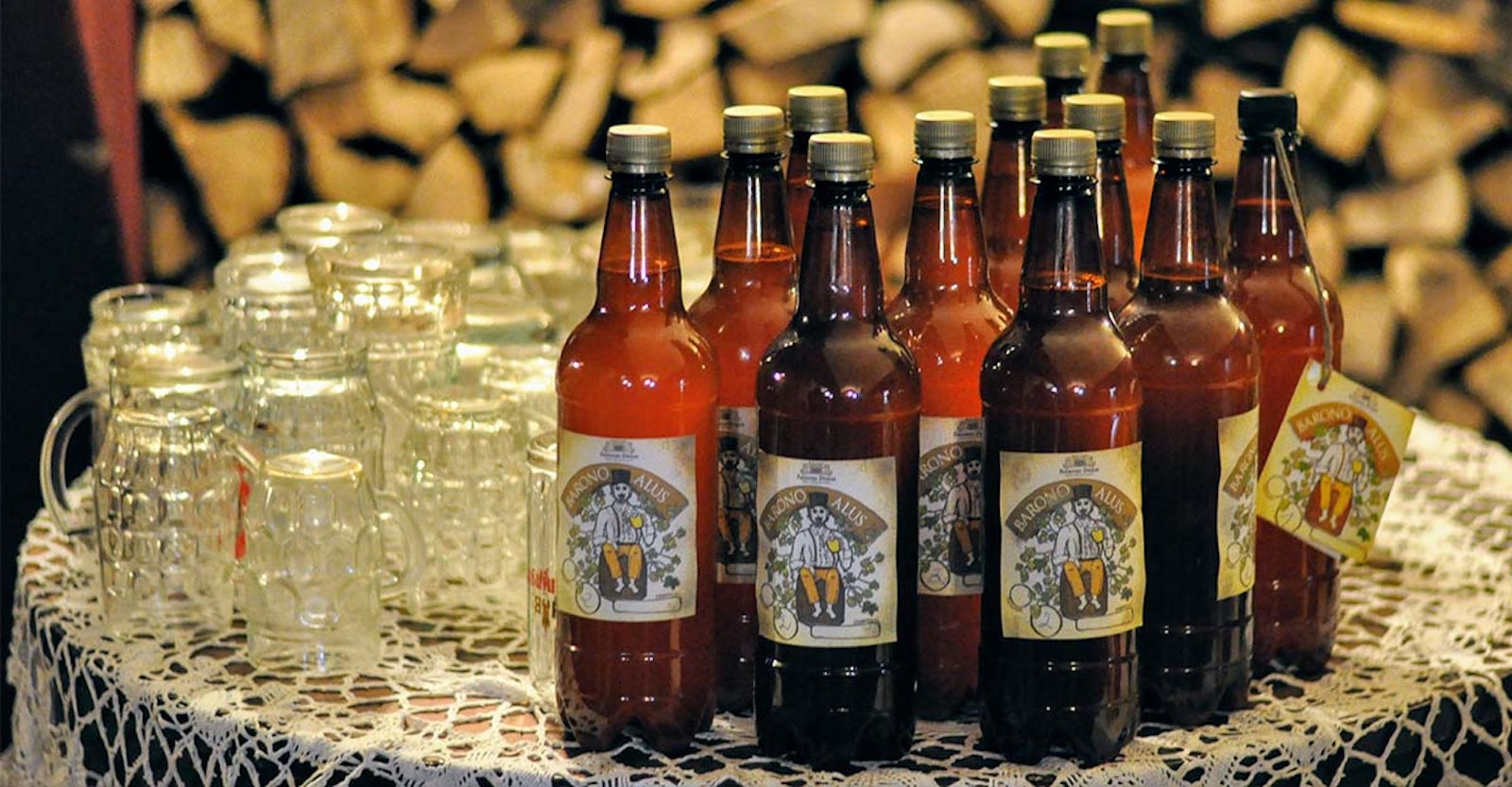This rudimentary recipe is inspired by the kaimiškas alus (farmhouse ales) of Lithuania—including those of Aldona Udriené’s Jovaru Alus, of Julius Simonaitis, and others. This “raw ale” gets its character from the malt; from the lack of boiling, which leaves proteins that provide body; from the hop tea, which you can adjust to taste; and from the unusual Lithuanian farmhouse yeasts, a few of which are now commercially available.
You can use those same yeasts to brew other styles of beers in more conventional ways; you can also use conventional yeast strains to brew raw ale. However, bringing the yeast together with this method should produce something more distinctive—closer to what you would find in northern Lithuania or in a few Vilnius pubs.
ALL-GRAIN
Batch size: 5 gallons (19 liters)
Brewhouse efficiency: 72%
OG: 1.054
FG: 1.004
IBUs: variable
ABV: 6.5%
MALT/GRAIN BILL
9 lb (4.1 kg) pilsner
1 lb (454 g) Munich
HOPS SCHEDULE
3 oz (85 g) whole-leaf Saaz for hop tea (see below)
YEAST
Omega OYL-033 Jovaru, Yeast Bay WLP4046 Simonaitis, or Yeast Bay WLP4047 Pakruojis
DIRECTIONS
In 2 quarts (2 liters) of water, boil half the hops for 1 hour and the rest for 15 minutes—you can do this while mashing. Mill the grains. (Optionally, add straw and the spent hops from the tea to the bottom of your lauter tun to serve as a traditional filter.) Mash at about 154°F (68°C) for 1 hour. Run off into a sanitized fermentor, chilling the wort to about 84°F (29°C), or allow it to cool to that temperature. Then pitch the yeast and add about ¼ of the hop tea. Loosely cover the open fermentor with a sanitized piece of foil. After 1 day of active fermentation, rack into a sanitized keg or cask—where fermentation will continue and build up CO2 pressure—and add the rest of the hop tea, to taste. Drink soon or vent the pressure, as the diastatic yeast will continue to ferment. Pour aggressively, allow the foam to settle in your mug, and enjoy.
BREWER’S NOTES
Malt: Look for characterful pilsner or pale malt. Notably, Viking has a malt house in Panevėžys, Lithuania; many kaimiškas brewers get malt from there. Floor-malted Czech pilsner or something from your local craft maltster also fits the profile and the spirit.
Hop Tea: There is a lot of room to experiment here. You can try boiling more aromatic hops for shorter amounts of time, for example, or make separate teas—one for bittering, one for aroma. We suspect some more fruit-forward New World hops could also be really interesting in kaimiŠkas.
Packaging & Pouring: The traditional way is to allow fermentation to finish naturally in the cask, which is then tapped for an impressive show of messy, spewing foam. A corny keg with picnic tap should work just fine for this. However, if you want to play it safer, you could carbonate as usual then pour aggressively, to knock as much CO2 out of solution as possible (while also creating foam).
Keptinis Variation Based on the observations and trials of Lars Marius Garshol, here is our best guess on where to begin your own keptinis experiments: Increase the malt bill to 14 lb (6.4 kg). Mash it thick at 65°F (18°C) for 1 hour. Preheat a pizza oven, or an oven with pizza stone, to 375°F (190°C) with the convection fan switched on. Divide the mash into deep loaf pans and bake 3 hours—a dark brown (not black) crust and cookie-like aromas should develop. Remove the mash-loaves from the oven, break them up into chunks, and return them to your lauter tun. Add the hop tea (as above) and lauter and sparge with near-boiling water. Cool and ferment as above.


